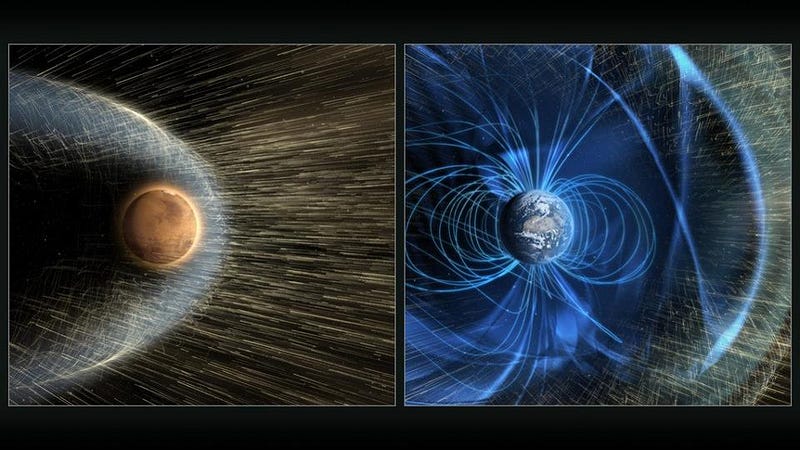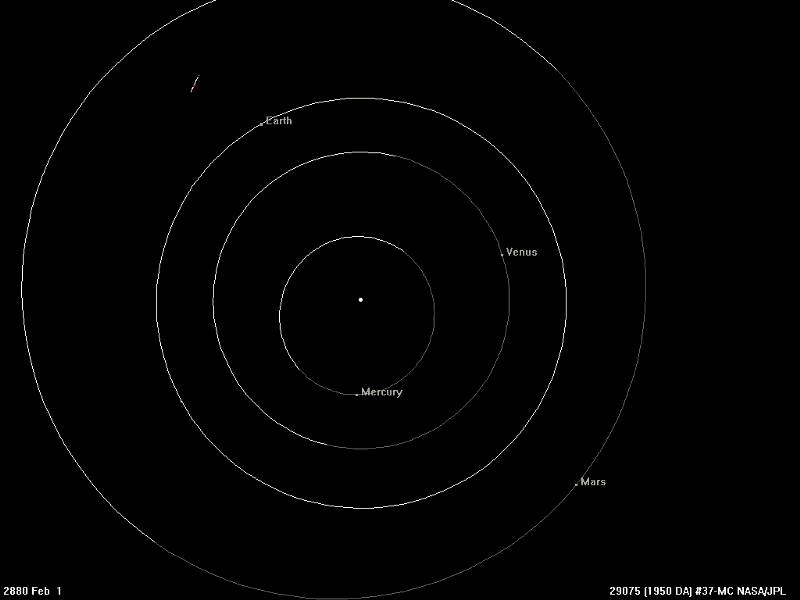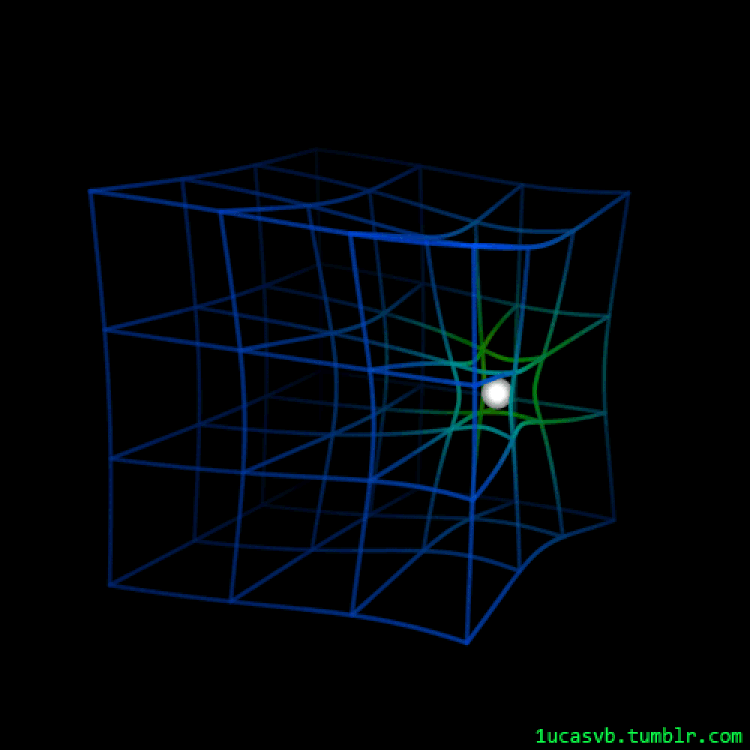Ask Ethan: Does Earth Orbit The Sun More Slowly With Each New Year?

If we’re migrating slowly away, is our speed changing, too?
Every year, planet Earth completes one revolution around the Sun while spinning on its axis. On a year-to-year basis, our orbital changes are so minuscule that they’re practically imperceptible, as the duration of a single revolution (1 year) is tiny compared to how long the planet has been revolving around the Sun (~4.5 billion years). And yet, our knowledge of the Universe is vast enough and our modern instruments are sensitive enough that we not only know that Earth’s orbit slightly changes over time, but we can quantify and confidently state exactly what those changes will be. What does this mean for the speed of Earth around the Sun? That’s what Frank Wirtz wants to know, writing in to ask:
“I read one of your articles that said that (for now) the Earth’s orbit is very slowly moving away from the Sun. Is an Earth orbit happening more quickly, or more slowly? Can you clarify for me?”
It’s a fascinating question to explore, and the short answer is yes. Each year, Earth migrates ever so slightly away from the Sun, and also takes slightly longer to complete a full revolution. Here’s the science behind it.

When we think about the Earth orbiting the Sun, we typically make a few simplifying assumptions. We think about the Earth rotating on its axis and moving through space, with the Sun’s gravitation being the only force working on it. We consider the Sun and the Earth as each having their own fixed, constant mass; we think about the space that Earth moves through being empty; we think about the Sun as remaining in the same place while the Earth orbits in an ellipse around it; we neglect the effects of the Moon, the other planets, and the effects that are exclusive to General Relativity; etc.
In reality, we not only know that all of these assumptions are false, but we can — if we’re willing to be precise enough — quantify these effects, and determine which ones are important, how important they are, and what changes they cause over the most simplistic approximation. If all we had were the Earth and Sun and treated them as two unchanging point masses, the Earth would simply make a closed, unchanging ellipse in its orbit: exactly what Kepler predicted. But if we want to be more accurate, we need to dig into those gory details.

The first effect we have to consider is the fact that the Sun shines. In this Universe, there’s no such thing as free energy, and that even goes for something like the Sun, which emits a whopping 4 × 10²⁶ W of continuous power. Where does the energy for that come from? From the nuclear fusion of hydrogen nuclei (beginning with protons) into helium-4 (with two protons and two neutrons), which occurs in a chain reaction that releases energy.
Every time that four protons fuse together, culminating in the production of one helium-4 nucleus, a total of 28 MeV (where an MeV is one million electron-volts) of energy is released. If we convert that into mass — which Einstein’s most famous equation, E = mc², allows us to do — we learn that the Sun loses a total of about 4 million tons of mass due to nuclear fusion with every second that passes. Over the lifetime of our Solar System, the Sun’s mass has decreased by about 95 Earth masses due to nuclear fusion, or approximately the mass of Saturn.

In addition to losing mass because of the energetic radiation leaving the Sun, our parent star also emits particles: the solar wind. The particles at the very limb of the Sun are held very loosely at the edge of the photosphere. Particles like electrons, protons, and even heavier nuclei can gain enough kinetic energy to get ejected from the Sun completely, creating a stream of particles that we call the solar wind. In addition, solar flares, coronal mass ejections, and other intense events periodically and irregularly occur, further contributing to the Sun’s mass loss.
They spread throughout the Solar System and the overwhelming majority wind up in the interstellar medium, carrying away approximately 1.6 million tons of mass each second at present. Over the lifetime of the Sun, this results in the lost of roughly 30 Earth masses due to the solar wind. When we combine the solar wind loss with the nuclear fusion mass loss, we find out that today’s Sun is about ~10²⁷ kg lighter than the Sun was some 4.5 billion years ago, right after the birth of our Solar System.

Of course, the existence of the solar wind doesn’t only affect the mass of the Sun and the gravitational force binding the Earth to our Sun, but a fraction of those particles also smash into our planet, causing a variety of effects. These charged particles get funneled by Earth’s magnetic field down onto our poles, where they produce aurorae upon striking the atmosphere. Some of the particles that collide with our planet can kick atmospheric particles into space, causing them to escape from Earth entirely.
And, relevant to the problem of Earth’s orbit changing, we can also have these solar wind particles inelastically collide with planet Earth, changing our motion, mass, and both our linear and angular momentum. A total of about 18,000 tons of material strikes our planet every year, taking approximately 3 days to travel from the Sun to the Earth. Just like the earlier two effects — the Sun’s mass loss due to nuclear fusion and the emission of particles — this one also changes Earth’s orbit, very slightly, over time.

These three effects are the only ones that matter right now, so we can calculate what’s happening to Earth’s orbit in the long run as a result of them.
- The effect of the solar wind slamming into Earth pushes us ever-so-slightly outward, but the enormous mass of the Earth compared to the tiny amount of solar wind that strikes us ensures this effect is small. Over the course of every million years, it pushes Earth’s orbit outward by about the width of a proton: 1 Å, or about half a micron over the lifetime of our Solar System.
- The two causes of the Sun’s mass loss, however — the ~30 Earth masses from solar wind production and the ~95 Earth masses from radiation — are more significant. With each year that goes by, this mass loss means that Earth spirals outwards at a rate of approximately 1.5 cm (about 0.6 inches) every year. Over the history of our Solar System, taking into account how our Sun has changed, we’re somewhere around 50,000 km farther from the Sun versus 4.5 billion years ago.
If we like, we can use this to calculate how much our orbital speed has changed as well.

The Earth, on average, revolves around the Sun at a speed of approximately 29.78 km/s (18.51 mi/s), or about 0.01% the speed of light. This actually varies slightly, since the Earth makes an elliptical orbit around the Sun: moving faster at perihelion (nearest the Sun) and slower at aphelion (farthest from the Sun). The difference is small, but computable. At our fastest, we move through space at 30.29 km/s (18.83 mi/s), while at our slowest, we move at 29.29 km/s (18.20 mi/s).
Although we don’t yet have the precision to measure how our speed through space has changed, our understanding of the physics at play — orbital dynamics, the behavior of angular momentum, and how gravitation works — allows us to calculate how our changing Solar System has affected (and continues to affect) our speed. With each year that goes by, the Earth slows down by approximately 3 nanometers-per-second over how quickly it was moving the prior year. Over the 4.5 billion year history of the Solar System, extrapolating from our previous math, our planet has slowed by approximately 10 meters-per-second, or about 22 miles-per-hour.

This is how Earth’s orbit is changing today, mind you, and how it’s changed over time so far. This same analysis applies very to our recent past as well as to our near-term future. But as we look to longer and longer timescales, and the very far future of our Solar System, we can identify three future effects that could change our orbit dramatically when they finally become important.
And there are a few. Over time, the gravitational effects of the planets tugging on one another will potentially cause our orbits to become chaotic. Although, for instance, the inner planets are all safe for the next billion years, there’s about a ~1% chance that one of the four of us — Mercury, Venus, Earth, or Mars — will become unstable in our Solar System orbits. If that occurs, Earth’s orbit could change significantly, possibly even hurling our planet into the Sun or ejecting it from the Solar System entirely. This is the most unpredictable component of our planetary orbit.

In addition, the Sun will evolve quickly towards the end of its life, ejecting large quantities of mass and swelling into a red giant. At this stage, Earth’s orbit will spiral outwards significantly, increasing by about 10–15% while our orbital speed decreases by about the same percentage. Meanwhile, the Sun expands, where it’s predicted to engulf Mercury and Venus, and will become larger than Earth’s current orbit, but not by much. The ultimate fate of Earth remains unknown.
There are random encounters that occur that we cannot predict very far into the future: the passage of rogue stars, brown dwarfs, and other masses through our Solar System. Any of them have the potential to eject Earth or perturb our orbit, but these changes are unpredictable.
Lastly, there’s gravitational waves. If all else fails, Earth will radiate its orbital energy away in the form of gravitational radiation, causing our orbit to decay and Earth to spiral into whatever’s left of the Sun after another ~10²⁶ years. This isn’t relevant on today’s timescales, but far enough into the future, it may be the only orbital effect of any consequence at all.

All told, the Earth spirals away from the Sun at a rate of about 1.5 cm every year, causing its orbital speed to drop by about 3 nanometers-per-second over that timescale. If you add up all the tiny changes that have occurred over our Solar System’s history, you’ll find that we’re now about 50,000 km farther away in our orbit than we were 4.5 billion years ago, and move at about ~10 meters-per-second slower around the Sun than we did way back when. As time goes on, we’ll continue to spiral away and slow down, as the Sun continues to lose mass due to nuclear fusion and the solar wind.
This might seem counterintuitive, but it makes more sense if you think about the Earth orbiting the Sun the same way you might hold a ball on a string and spin it around. If your string is short and the force you exert is large, the ball will spin very fast. If your string is long and the force is small, the ball spins more slowly. As we lengthen the proverbial string representing the Earth-Sun distance, the gravitational force gets a little bit weaker, and hence the Earth has no choice but to move more slowly. The effect may be small on a year-to-year basis, but the Universe, as best we can tell, has infinite patience. Enjoy your most recent journey around the Sun, because we’ll never have one that goes by this fast again.
Send in your Ask Ethan questions to startswithabang at gmail dot com!
Starts With A Bang is written by Ethan Siegel, Ph.D., author of Beyond The Galaxy, and Treknology: The Science of Star Trek from Tricorders to Warp Drive.





